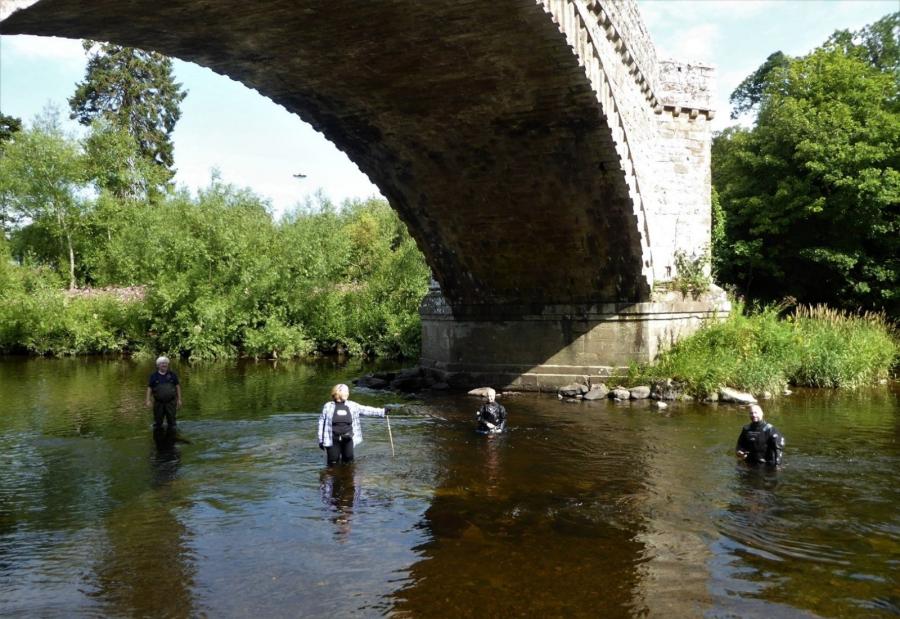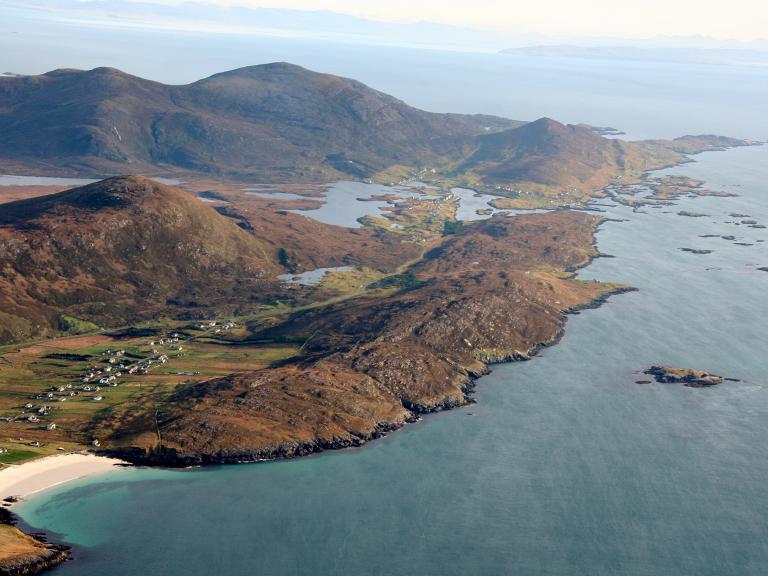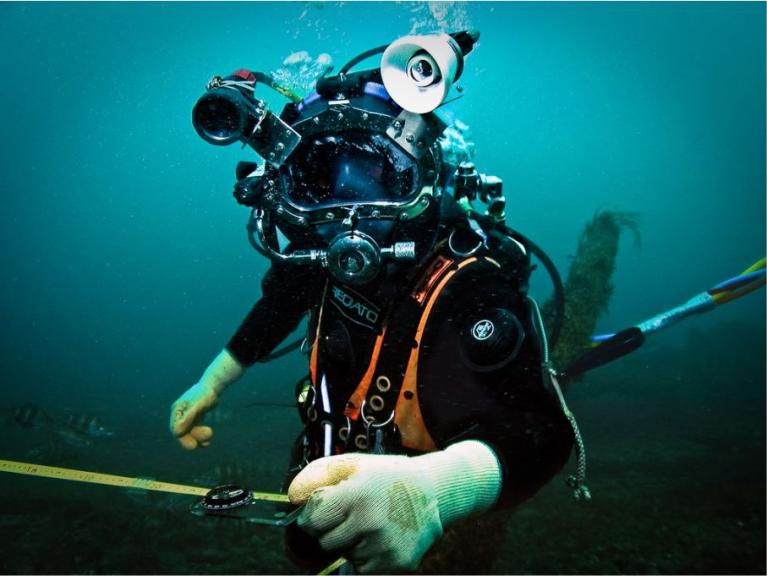Wessex Archaeology was commissioned by Historic Environment Scotland (HES) to undertake a survey of the remains of a medieval bridge submerged in the River Teviot near Ancrum, Scottish Borders. The remains of the bridge were discovered by Ancrum and District Heritage Society (ADHS) in 2018. The bridge remains represent the earliest dated in situ bridge remains in Scotland and are older than any bridge still standing.
There are a few historical references to the bridge from the 16th century onwards, but no one knew when or by whom it was built. Archaeologists have had very few chances to study medieval bridge building in Scotland, so this was a unique opportunity for our team.
Our approach
Wessex Archaeology worked with ADHS in July 2020 to survey, map, record and sample the bridge remains. This included a total station survey, a photogrammetric survey and a close visual inspection of the remains. Timbers were also sampled with the help of Dr Coralie Mills of Dendrochronicle for dendrochronological and radiocarbon dating to try to obtain a date for the felling of the oak timbers that lie in the pier base.

Kevin Grant, Archaeology Manager at HES:
“HES are delighted to have played a part in funding one of the most exciting and significant archaeological discoveries in Scotland in recent years. This project shows that discoveries of immense importance remain to be found by local heritage groups –- and what can be achieved by bringing archaeological science and expertise together with local knowledge which has helped to unlock a centuries-held secret that will add to the fabric of Scotland’s story."
What remains of the bridge?
The site consists of the remains of two foundations or pier bases of a bridge, lying submerged beneath the northern and central arches of a later bridge, built in 1784.
The northern foundation is heavily eroded, with only two kerbstones and two pieces of timber visible. The southern foundation is more complete, with numerous kerbstones and timbers visible.
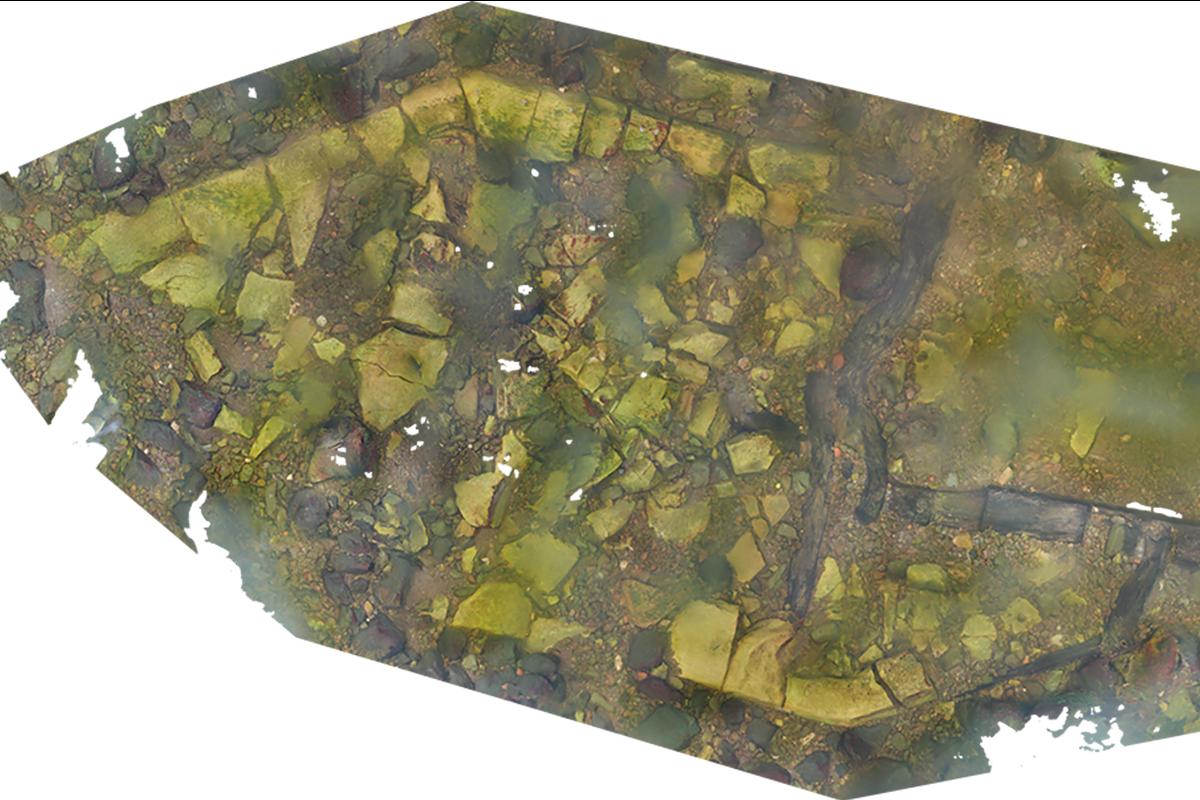
Above: A high resolution orthophoto of the southern foundation.
What did we discover?
The southern foundation was likely built in the mid-14th century AD and formed part of a four arched (at least partly) masonry bridge. The construction process involved the use of branders, a process not previously archaeologically witnessed in Scotland. A timber framework was constructed and pinned into the riverbed, before the stonework of the pier and cutwater was added on top. One timber likely predates the 14th century construction of the bridge and may have been reused from a previous even earlier bridge on the site.
It is unknown who built the bridge, but the likeliest candidate seems to be the Church.
These bridge remains represent the earliest scientifically dated in situ bridge remains in Scotland and are older than any bridge still standing. The date of the construction of the bridge is fascinating as it falls within the Second War of Independence and about the same time as the arrival of the Black Death in Scotland. For these reasons, this period had previously not been thought to be particularly favourable for bridge building.
The bridge may have played a pivotal role within the history of Scotland, representing one of the few (and for long periods possibly the only) permanent crossings existing on the Teviot/Tweed in the medieval period and was the site of two military actions during the ‘Rough Wooing’ in the mid-1500s.

Dr Bob MacKintosh of Wessex Archaeology Coastal & Marine:
"The site was challenging to survey, and particular river conditions were needed to complete it safely. The regular monitoring of the site by ADHS, and the excellent photography and surveying they completed prior to our involvement made our work a lot easier. The results are really exciting. In addition to the surprisingly early date, it seems the foundations were built using branders, a wooden frame laid on the riverbed upon which the courses of stone were placed. This is the first-time branders have been found in an archaeological context in Scotland. They are otherwise only known from historical sources and two accounts of engineering works on extant bridges completed in the 19th and early 20th century."
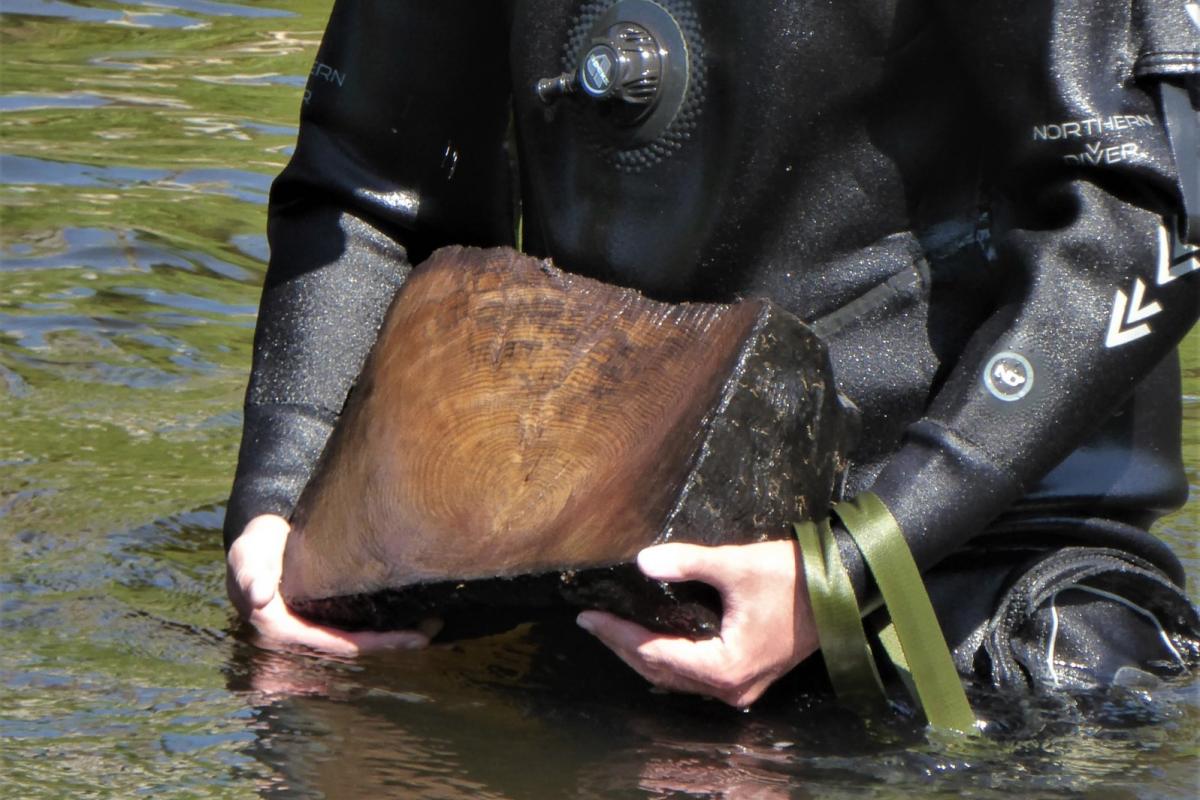
More information:
- In 2021 HES designated the remains as a Scheduled Monument due to their national importance. More information can be found on the HES website.
- ADHS also have more information about the bridge remains on their website.
